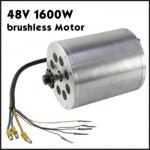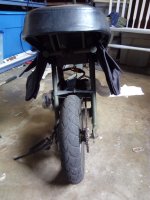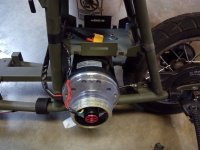Hello Guys,
Im Jan from Germany and Im pretty happy to final have passed that registration question. It was hard, no kidding!
I am currently searching for a motor for some small EV projects (Kart, Bike, Board) and was wondering about the power output of certain motors.
The first product I was watching is a brushless scooter motor made by Boma (I think) it is rated 48v 1600w 4600rpm 34-42amps and weights 3,8kg with 107mm in diameter.

I've compared it to many low kv brushless outrunners which only weight less than a kilo, diameter and lenghts is around 59mm and they have a rated output of 2,5-3kw and I just dont get it. Okay they can draw double the amps but is it right that they have more "power"?
I would appreciate every help and explanation according this case, the information on the german side of the Internet is limited
Of course I have searched this forum for the motor but just found out little... I've read things like "I dont know who would chose this Motor, anyway" and someone said he's put it in a kids quad after the my1020 burned and he is pretty happy with it.
Whats so bad about this motor and why is the output so weak for a motor of its size and weight (if it is)?
Thanks already for reading this mess till the end, please enlighten me
Im Jan from Germany and Im pretty happy to final have passed that registration question. It was hard, no kidding!
I am currently searching for a motor for some small EV projects (Kart, Bike, Board) and was wondering about the power output of certain motors.
The first product I was watching is a brushless scooter motor made by Boma (I think) it is rated 48v 1600w 4600rpm 34-42amps and weights 3,8kg with 107mm in diameter.

I've compared it to many low kv brushless outrunners which only weight less than a kilo, diameter and lenghts is around 59mm and they have a rated output of 2,5-3kw and I just dont get it. Okay they can draw double the amps but is it right that they have more "power"?
I would appreciate every help and explanation according this case, the information on the german side of the Internet is limited
Of course I have searched this forum for the motor but just found out little... I've read things like "I dont know who would chose this Motor, anyway" and someone said he's put it in a kids quad after the my1020 burned and he is pretty happy with it.
Whats so bad about this motor and why is the output so weak for a motor of its size and weight (if it is)?
Thanks already for reading this mess till the end, please enlighten me









